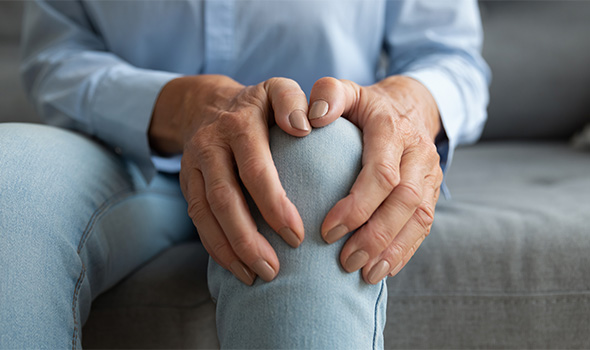
Understanding Osteoarthritis
What is Osteoarthritis?
Osteoarthritis (OA) is the most common form of arthritis, affecting millions of people worldwide. It occurs when the cartilage (the cushion-like tissue covering the ends of bones) breaks down over time. This leads to pain, stiffness, and swelling in the affected joints. OA can impact any joint but is most common in the knees, hips, hands, and spine.

Symptoms of Osteoarthritis
Symptoms of osteoarthritis can vary. The most common signs include:
- Joint pain and tenderness: Pain that worsens with activity or after prolonged periods of rest.
- Stiffness: Limited motion in the affected joint, especially after periods of inactivity or in the morning.
- Swelling: Fluid buildup in the joint, causing visible swelling and warmth.
- Crackling or grinding sounds: A sensation of crunching or creaking when the joint moves.
- Decreased flexibility: Difficulty bending or fully extending the joint.
Causes and Risk Factors
The exact cause of osteoarthritis isn't always clear. However, there are several factors that can increase the risk of developing it. These include:
- Age: The risk of OA goes up with age, particularly after 45 years of age.
- Genetics: if osteoarthritis runs in your family, you may be more susceptible to it.
- Joint injury: Previous injuries such as fractures or ligament tears can lead to OA later in life.
- Obesity: Carrying excess weight places additional stress on weight-bearing joints, especially the knees and hips.
- Gender: Women are more likely to develop osteoarthritis, particularly after menopause.
- Inactivity: Lack of physical activity can weaken muscles and worsen joint stiffness.
Treatment Options
While osteoarthritis currently has no cure, there is a variety of treatment options that can help manage symptoms and improve one’s quality of life:
- Lifestyle changes: Maintaining a healthy weight, staying active with low-impact exercises, and eating a balanced diet can help reduce symptoms.
- Medications: Over-the-counter pain relievers, like acetaminophen or NSAIDs, may help manage pain and inflammation. In some cases, doctors may recommend prescription medications or corticosteroid injections.
- Physical therapy: Specific exercises can improve joint flexibility, strengthen muscles, and reduce pain.
- Surgical options: In severe cases, joint replacement surgery (such as a knee or hip replacement) may be considered to relieve pain and restore mobility.
Living with Osteoarthritis
Managing osteoarthritis requires a multifaceted approach. By staying informed about your condition and working closely with your healthcare team, you can better control symptoms, stay active, and maintain a high quality of life. If you experience symptoms of OA, it’s important to seek early intervention, as timely treatment can help slow the progression of the disease.
Prognosis
The progression of osteoarthritis varies from person to person, but with early diagnosis and effective treatment, many people can manage symptoms and maintain an active lifestyle. While OA is a progressive condition that may worsen over time, treatments such as medication, physical therapy, and lifestyle changes can significantly reduce pain and improve joint function. In more advanced stages, surgical options like joint replacement may be necessary to restore mobility and reduce discomfort. Early intervention and ongoing care are key to slowing disease progression and enhancing long-term quality of life.
Reach out to us
If you're ready to take the next step toward better health, visit the North Florida Medical Center's locations page to find the most convenient center near you. You can also contact the team directly for more information or request an appointment online to start your personalized care journey today.
Our locations Contact us Request appointment